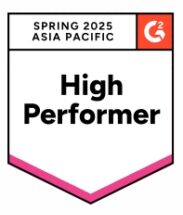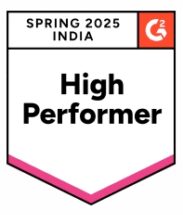Welcome to another Q&A session of ExtraMile by WisdomPlexus, an interview series where we connect with industry leaders to explore the latest trends and innovations.
Today, we are thrilled to host Sathya Narayanan Nagarajan, the Co-founder and CTO of Amnic. With a career spanning over two decades in tech, Sathya has been a key player in AI, EV, and distributed systems, and is now at the forefront of a movement to bring clarity to cloud costs.
In this interview, Sathya shares what inspired him to co-found Amnic and how his background shaped a vision for a system that provides continuous, actionable cloud intelligence. He also explains how Amnic’s platform is helping businesses like Open Financial and LambdaTest achieve significant cloud savings.
With two decades of hands-on experience building AI systems, electric vehicles, and massive cloud platforms, he is the engineer who spots problems that others ignore.
Join us as we explore the future of cloud cost optimization and learn about the leadership lessons that guide Sathya's work at Amnic.
1. Sathya, based on your experience, what critical gap in cloud management inspired you to co-found Amnic? How did your technical backgroundshape this vision?
Sathya. Over the last two decades, I’ve worked across AI, EV, and distributed systems, and led the development of AI-based safety technologies and IoT platforms for connected mobility. Through all of this, what I consistently noticed was the lack of continuous and actionable cloud intelligence. Teams had to rely on disconnected dashboards and manual effort to understand cloud costs or system behavior, especially when scaling globally.
The recurring challenge was this: cloud costs were opaque, and there was no easy way to correlate spending with engineering decisions or business outcomes.
That gap led to the vision behind Amnic. We wanted to build an autonomous system that helped businesses and teams understand their cloud costs at the most granular level possible. Our aim was to interpret the “why” behind cloud spend, surface the root causes, and guide teams on exactly what actions to take next.
My experience has always been rooted in making infrastructure both efficient and reliable. At Amnic, that translated into building a system that puts cloud costs at the forefront of their engineering efforts. This paved the way to create something all the teams could actually use to optimize usage, reduce spend, and improve overall cloud infrastructure efficiency.
2. Amnic’s AI agents provide ‘context-aware’ cost insights. Can you explain how thisworks differently from traditional cloud cost tools, perhaps with a real example?
Sathya. Traditional cloud cost management tools primarily offer visual dashboards and highlight percentage changes in spend. There is still a lot of clicks and analysis that needs to be performed to get to the bottom of understanding what made the cloud costs spike. This was the problem we wanted to solve with Amnic AI. We asked ourselves, “What if we could ask the AI complex queries on the cloud costs, just as we would ask a teammate?”
Today, you can use natural language to assign tasks or gain insights from Amnic AI and it will help you get to the bottom of the cost analysis without much heavy lifting.
An interesting use case is how one customer noticed that their cloud cost had gone up by 50%. They just had to ask the question of “how is it happening?” Amnic AI was able to provide them with a detailed view and analysis into which instance type, which tag, which resource was causing the costs to rise and what they can do to remediate it. And did it in less than a minute.
3. Could you share a specific case where Amnic helped a company uncover unexpected cloud savings or optimize their infrastructure significantly?
Sathya. One standout example is Open Financial, one of India’s fastest-growing FinTech companies. They were balancing high infrastructure demands with rising cloud costs, particularly on services like EC2, RDS, and EBS. Within 24 hours of connecting to Amnic, they gained deep visibility into their cloud usage and cost drivers.
With Amnic, they uncovered inefficiencies across EC2 instance types, unused storage snapshots, and suboptimal EBS volume configurations. Our platform recommended a shift to GP3 volumes, smarter EC2 and RDS configurations, and strategic use of Savings Plans and RIs. These changes collectively led to a 30% reduction in their overall cloud spend, with a 33% drop in EC2 costs alone. Today, Amnic is embedded in their daily workflows for continuous optimization.
Another interesting case study is our engagement with LambdaTest. As the company scaled, they needed full visibility into our cloud spend. Amnic integrated seamlessly, helped them identify optimization opportunities, and delivered a 30% reduction in both NAT and CloudWatch costs. It was our recommendation engine and deep FinOps expertise that helped them uncover the potential savings.
Our engagement with Uni has been eye opening too. To stay competitive, Uni needed tighter control over our infrastructure, especially Kubernetes. Amnic was able to deliver instant visibility and helped right-size their nodes and pods, eliminate inefficiencies, and reduce cloud spend by 20% in just a month. The seamlessness of the integration made it easy for Uni to get started and witness ROI instantly.
4. As Kubernetes and serverless architectures grow, how is Amnic adapting its technology to help manage these modern deployment costs?
Sathya. We built Kubernetes observability as an intuitive way to understand K8s utilization and costs across infrastructure. Amnic tracks cost by container, pod, PVC, and DNS-level usage. Our Insights Agent recommends rightsizing at the pod level based on autoscaler inefficiencies. And for serverless, we map lambda or function usage back to application-level metrics to help teams spot idle invocations or memory overcommit early.
5. With cloud cost tools accessing sensitive spending data, how do you ensure security and privacy in Amnic’s platform?
Sathya. Security is non-negotiable. Amnic is an agentless solution that ensures nothing is provisioned on your environment.. Additionally, Amnic is SOC2 Type 2, GDPR, and ISO: 270001 certified. No customer data is ever accessed by Amnic.
6. Where do you see the next major innovations in cloud cost optimization happening in the coming years?
Sathya. The cloud cost management space is rapidly evolving, and the changes are mostly tech-led. The predominance of AI is one of the driving factors of the major innovations across the space.
On one hand, we will see growing demand from businesses to measure and manage the cost of running AI workloads. As AI models become larger and more compute-intensive, organizations will need granular visibility into the cost of GPUs, model training, inference workloads, and data transfer. And there’s more to it than just monitoring spend; businesses will need to focus on cost per model, per team, and per use case, and be able to forecast accurately in a world where AI workloads can scale rapidly and unpredictably.
On the other hand, AI and AI agents will lead the front of helping teams navigate, understand, and manage their costs. As I mentioned earlier, teams no longer need to manually dig through dashboards. They can just interact with intelligent agents that understand organizational context, stakeholder priorities, and historical trends, in just a click or two. These agents surface cost anomalies, generate stakeholder-ready reports, and so much more.
7. Having led engineering teams at scale, what key technical leadership lesson from your Ola/Yahoo days do you apply most at Amnic today?
Sathya. Build operational empathy. I led engineering and cloud migrations across billions of transactions. I learned that tools must support the people who depend on them, be it SREs, finance, or execs. At Amnic, every feature, like stakeholder-specific reporting, comes from operational empathy: understanding the end-user in context, not abstract dashboards. That’s been the core of our design philosophy.
Additionally, I’m also a strong believer in listening to the voice of the customer. As suggested in Atomic Habits, listening to the customer’s feedback and implementing it 1% each day has helped us scale massively in terms of building a product that truly adds value to the end users.
Dive Into Another Expert Conversation:







